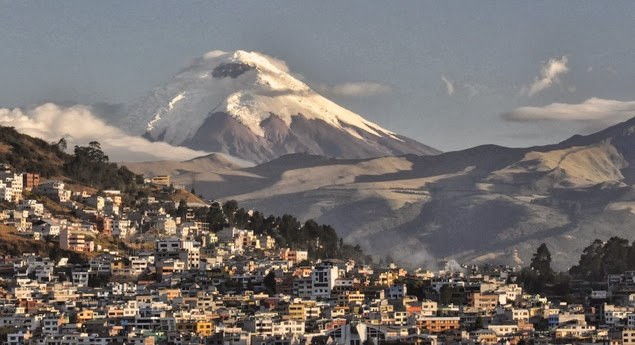The fresh face of Ecuador’s old city
executive summary by darmansjah
Surrounded by bunches of bright sunflowers and chamomile, Rosa Lagla gently
performs soul-cleansing limpia treatments in a market just a few
blocks from Plaza de San Francisco, hub of Quito’s
restored Old Town. Rubbing handfuls of stinging nettles, sweet herbs, and rose
petals into the skin drives out bad energy, she says, working the plants to a
pulp. With botanicals brimming from plastic bags, Lagla brings the Andean
healing practice to guests of the newly restored Casa Gangotena on the plaza.
Healer and hotel span two worlds, the traditional and the modern, both
reinvigorating this city of 1.6 million.
For too long, travelers have neglected Ecuador’s capital city en route to
the nation’s marquee attraction, the Galápagos
Islands. Though its Spanish colonial center has been enshrined as a UNESCO
World Heritage site since 1978, the area has more recently undergone a
renaissance warranting longer stays. In the past decade, city officials have
invested nearly $500 million to make improvements to its historic quarter. At
Quito’s heart, cobblestoned streets and pastel-colored mansions hem the
revitalized San Francisco Church. Many restorers of the landmark learned to
apply gold leaf, inlay wood, and chisel statuary in a nearby workshop with a
mission to teach skills to impoverished teenagers with an aptitude for art.
People are primary in Quito’s new museums. Emphasizing storytelling, Casa del
Alabado arranges its pre-Columbian art and artifacts thematically to dramatize
the mystery of the ancients. Quito’s historic center is now beginning to
cultivate a vibrant nightlife. On Calle La Ronda, music sings out from
restaurants and bars. But Lagla lifts spirits the old way. Sweeping up sage post-ritual,
she says, “Se fue, el espanto. La energia vuelve—It’s gone, the
fright. Energy returns.” She could be speaking of Quito, too. —Elaine
Glusac
Travel Tips
When to Go: June-September (dry season, cool temperatures)
Where to Stay: Casa Gangotena combines luxury lodging with numerous
cultural immersion opportunities supporting Quito’s Heritage Guardians program.
How to Get Around: The extensive transportation network
includes private and public buses, the Trolebus (trolley bus), and trains. On a
clear day, take the TelefériQo scenic gondola up the slope of Pichincha Volcano
for panoramic views of the city and the Andes.
Where to Eat or Drink: Assemble a group of at least six to
book a private, three-course dinner at indigenous community-owned Kallari Café in La
Mariscal. The $7.50 per person tab includes a brief Kichwa language and
cultural presentation, plus an inside view (and taste) of Kallari’s
single-origin artisanal chocolate and coffee production process.
What to Buy: Pick up tchotchkes in the La Mariscal craft
stalls, and stroll along Calle La Ronda during the day to soak up the colonial
past. For authentic Ecuadorian tapestries, straw fedoras, masks, and tiles,
visit the esteemed Olga
Fisch Folklore Gallery and Museum.
What to Watch Before You Go: Prometeo Deportado (Prometheus,
Deported). This 2009 film from Ecuadorian director Fernando Mieles
explores how immigration has affected Ecuadorian society, which counts some
three million of its people living and working abroad.
Fun Fact: Sitting 9,350 feet above sea level, Quito is one
of the world’s highest capital cities. Its formal name, San Francisco de Quito,
reflects both the city’s pre-Inca, indigenous Quitu culture and nearly 300-year
(1534-1822) Spanish colonial period.
Helpful Links: Quito Tourism, Ecuador Ministry of Tourism

No comments:
Post a Comment